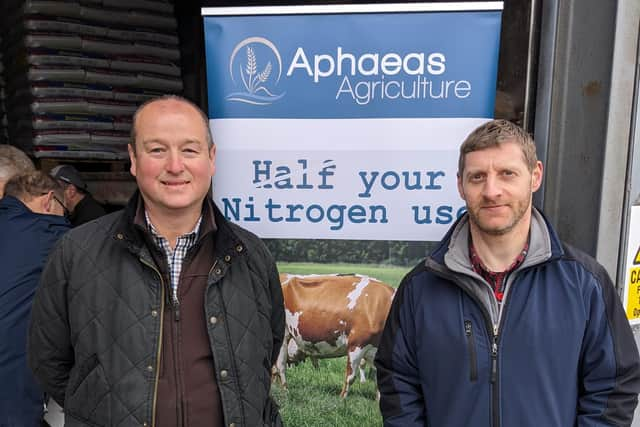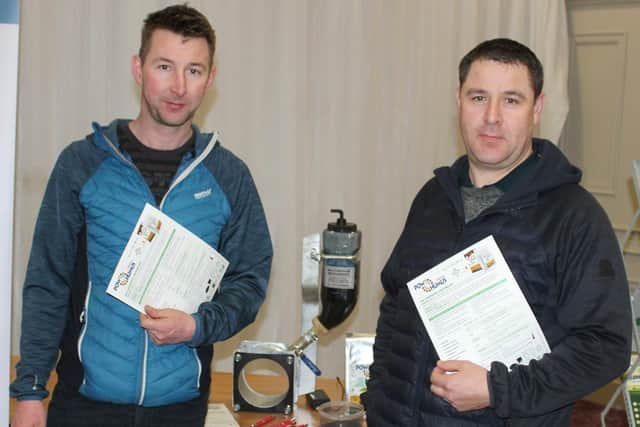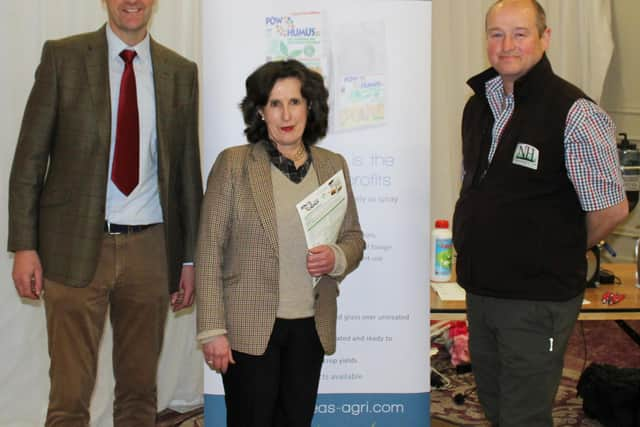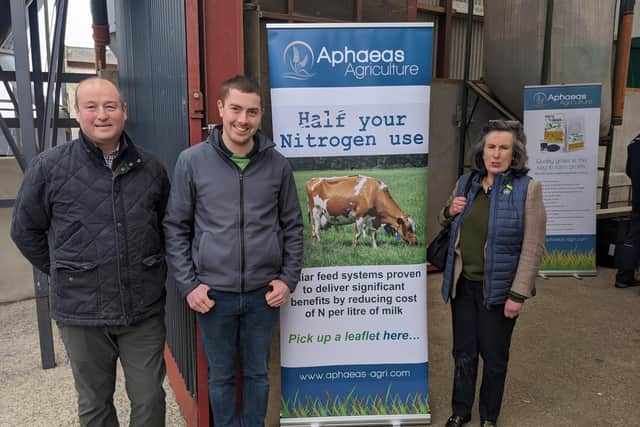Benefits of foliar feeding outlined to NI farmers
and live on Freeview channel 276
The technology has been widely used within the arable sector over a number of years. However, the potential to use foliar feeding as a crop nutrition option for grass swards is only now being explored.
Trials carried out at locations in Wales over a three-year period have confirmed that the application of foliar nitrogen to both grazing and silage swards can be increased by a factor of 300% and 200% respectively.
Advertisement
Advertisement
So where an application of 250kg of N/ha was used with conventional fertiliser, similar yields could be achieved with 100kg of N/ha.


The work was carried out by Aberystwyth-based grassland consultant Nigel Howells. Not only did his trial confirm the improved nitrogen use efficiency of a foliar applied nitrogen, it also pointed to an improvement in quality such as the significantly enhanced forage sugar levels that can be achieved by taking this approach.
Using a foliar nitrogen, as opposed to a granular source, helps to maintain soil pH levels. Urea was the nitrogen source used in the Welsh trial.
So impressed was Farmcare Products’ Mark Crawford with the results of the work carried out in Wales that he decided to push ahead with the development of a foliar feed that would meet the specific needs of grassland farmers in Northern Ireland.
Advertisement
Advertisement
He explained:“An aqueous solution of ammonia is a very unstable product. The key to making the technology work effectively is centred on the addition ofa carbon source, one that will complex with the urea, thereby making its translocation into the grass plant almost immediate.


“The work carried out in Wales, identified humic acid as the option to run with in this regard, so it made sense to follow this lead.”
Farmcare’s new grassland foliar feed has been branded: GrowFas.
It was brought to market for their first time with a significant number of farmers opting to trial it.
Advertisement
Advertisement
A follow-up survey undertaken by the team confirmed the following results: 60% of those farmers using the product identified a clear and obvious benefit, 30% were unsure and 10% of users had some questions about the new product.


Mark Crawford again:“It is extremely encouraging that 60% of the farmers using GrowFas last year were able to replicate the results with the new product.”
He added:“This is a new technology: we knew from the outset that there would be a need to hone the application protocol.”
According to the Farmcare representative, a number of core issues must be addressed, if foliar feeds are to deliver on their optimal potential.
Advertisement
Advertisement
First off, all underlying quality criteria, relating to a soil’s physical, biological and chemical properties must be addressed.


Hard water can also be an issue in many areas of Northern Ireland, which can be easily resolved through the addition of a water softening agent.
Foliar feeds should not be applied during windy conditions as spray drift will be an issue in such circumstances.
The same principle holds when swards are under drought stress. In such circumstances the stomata within that grass leaves will have closed over, leaving no point of entry for the applied product.
Advertisement
Advertisement
“However, the biggest issue to be addressed is that of mindset change,” stressed Mark Crawford.
“Farmers using a foliar feed must fundamentally realise that they are using a sprayer to apply crop nutrients. The principles involved here are completely different from those associated with the spreading of a granular product.”
He added:“Traditionally, farmers would have gone out with a fertiliser spinner immediately after grass had been cut for silage or stock had been moved on to the next set of paddocks. However, when applying a foliar feed to a sward, it’s case of waiting for 10 days post cutting or grazing.
“Essentially the grass re-growth and conditions will tell you when to go, rather than deciding for yourself.
Advertisement
Advertisement
“By taking this approach, sufficient sward re-growth will have taken place to allow the applied feed to effectively adhere to the growing grass leaf.
“Foliar feeds are absorbed by the plant immediately and have a much faster mode of action and this is why total nitrogen application levels can be so significantly reduced.”
Mark Crawford believes this latter point is crucially important as agriculture in Northern Ireland seeks to address the challenge of reducing the ammonia-related emissions, as required by environmental legislation.
A standard sprayer, set up to apply herbicides and fungicides, can be used to apply a foliar feed.
Advertisement
Advertisement
Significantly, GrowFas does not cause any issues relating to corrosion: a standard wash out protocol for the sprayer meets all requirements in this regard.
GrowFas is available now in 1,200L cubes, each comprising a 15% nitrogen solution.
Mark Crawford further explained: “The 1,200L of product can deliver a growth response equivalent to 50 bags of N when used for grazing purposes or 30 bags of nitrogen when used on silage ground.
“Our recommendation is to make 24L of the concentrate up to 100L of solution with water, with the standard application rate of 100L of diluted GrowFas per acre. To start off with, however, we recommend a slightly higher rate to see the initial response and from there tweaks back can be made.”
Advertisement
Advertisement
He concluded:“Foliar feeding is about to open many new opportunities for grassland farmers and we are still learning.
“The potential to include potash, sulphur, phosphate and trace elements within these products is immense. These are all issues that Farmcare Products will be addressing as we look to the future.”
The role of humic acid within GrowFas was profiled at the series of meetings this week, as was their general role as soil conditioners.
Susan Wilson of Aphaeas Agriculture, who is the agent for the German company Humintech, also addressed this week’s series of farmer meetings. She specifically highlighted the role that humates can play in improving soil structure, biology and chemistry.
Advertisement
Advertisement
Their ability to deliver improved crop performance has been largely confined to arable farming until now, but they are being increasingly used on grassland and dairy farms. Added to slurry when spreading at a rate of 1kg/acre, the results have been excellent with an average 25-30% increase in grass production.
Together with increases in DM% and Brix (sugar) levels, the improved quality forage has led to increases in both milk yield and quality for Irish dairy farmers. There is much scope to use humates both as an addition to slurry and in foliar feeds to substantially reduce farm inputs and increase farm profitability, while increasing the quality of the finished product.
For further information, contact Mark Crawford on 077333 46310